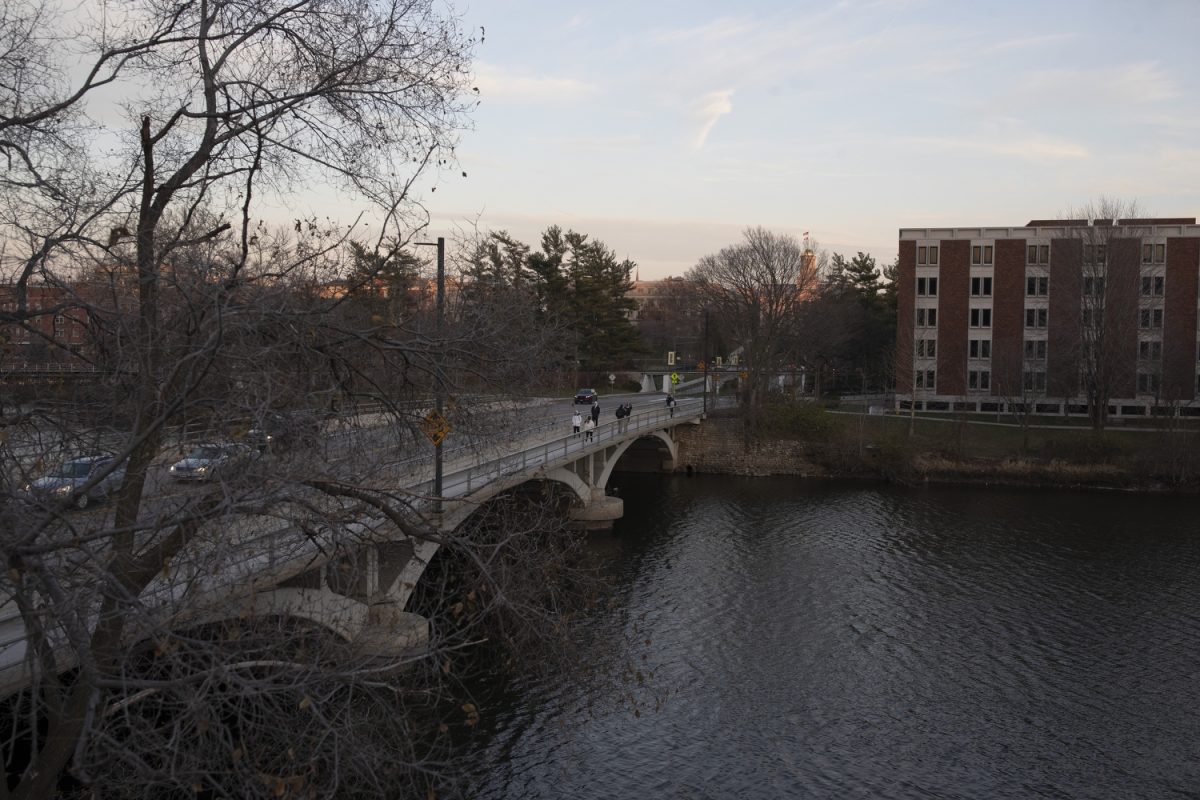At the University of Iowa campus and around Johnson County, stormwater coordinators and environmental specialists say stormwater runoff has decreased due to certain management practices.
According to Johnson County, “stormwater runoff is rainfall or snow melt that runs off hard surfaces, such as roads, buildings, or compacted soil.”
The runoff is then collected and transported through storm sewers that lead directly into streams, rivers, and lakes without being treated first.
As the runoff travels, it can collect other hazardous pollutants such as oil, grease, sediment, trash, and harmful chemicals. These pollutants can then end up in nearby water sources, which can lead to negative impacts on ecosystems.
In addition, stormwater runoff can lead to erosion, flooding, lack of groundwater, and other issues.
At the UI, Environmental Specialist Darice Baxter oversees a variety of projects to ensure compliance with stormwater regulations, implement effective stormwater management practices, and collaborate with others to protect the environment and water in our community.
“Back in the day, I used to only worry about construction by runoff, and now, over the years, we have a huge focus on post-construction runoff,” Baxter said. “That is basically the biggest thing I am trying to do at the university at the moment is trying to add as many infiltration pieces as we possibly can.”
There are currently several projects around the UI to aid in stormwater management, Baxter said.
Several past, current, and future projects include the West Campus Parking Ramp along with the new gymnastics, dance, and cheer squad building.
Another project that is currently undergoing stormwater management is the Health Sciences Academic Building. This project will have a focus on integrating stormwater management into the design as construction is underway.
Baxter, along with others at the UI, is dedicated to a holistic approach to stormwater management, including addressing erosion and runoff issues in existing sites.
“We always want to leave the site better than we found it,” Baxter said.
The projects are also focused on the concept of a “treatment train,” which includes green roofs, permeable paving, and flower beds that redirect water to a water quality unit before reaching the Iowa River. Bioretention cells, which are shallow stormwater basins that utilize engineered soils and vegetation to capture and treat runoff, are used in these projects as well.
Green roofs are also included, which consist of roofs covered in plants that reduce stormwater run-off and lower cooling costs.
RELATED: Iowa City reaffirms homeowners association is responsible for stormwater management
Mike Wolfe, the stormwater coordinator for the City of North Liberty, said there has been a decrease in runoff or other negative impacts from stormwater.
“As we develop out here in town, I’m actually seeing less and less impacts of rain events and less sediment released into Muddy Creek because it’s being managed on these sites,” Wolfe said.
Wolfe also said the city uses a regional approach by designing stormwater systems during initial development, such as regional ponds or dry basins, which are managed by homeowners associations.
“Our main goal when all the development is done and everyone’s living in their houses, we try to continue to improve areas the same as Iowa City and Coralville,” Wolfe said. “We have cost-share programs to financially help homeowners and businesses out if they want to improve infiltration rates and their soil health on their property.”
In addition, North Liberty uses modern equipment and computer models to manage snow and salt applications that’ll ensure minimal impact on water quality.
In the future, Baxter said the Utilities and Facilities Management at the UI will continue to focus on infiltration and post-construction practices.
“There’s more impermeable services that are being added to areas and trying to figure out a way to make that as low as possible, which is why we treat each project individually and try not to add more runoff,” Baxter said.



